Brant: Latinus Sitting amidst Grieving Women before Laurentum
Annotations
In the upper right, King Latinus sits while grieving among grieving citizens in front of the city of Laurentum. In the foreground, men move the ashes and bones from a funeral pyre into containers. In the upper left, there are troops. It appears this image was mistakenly printed here, as well as in its intended place (XI 203-242), instead of what should be an image of Aeneas's rampage (510-542).
Woodcut illustration from the “Strasbourg Vergil,” edited by Sebastian Brant: Publii Virgilii Maronis Opera cum quinque vulgatis commentariis expolitissimisque figuris atque imaginibus nuper per Sebastianum Brant superadditis (Strasbourg: Johannis Grieninger, 1502), fol. 360v, executed by an anonymous engraver under the direction of Brant.

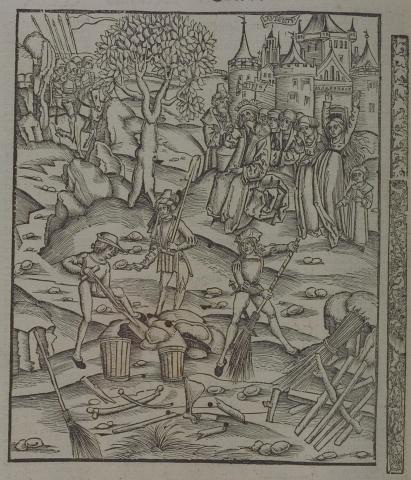
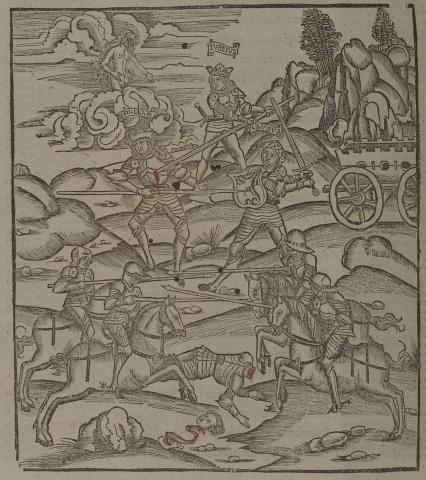
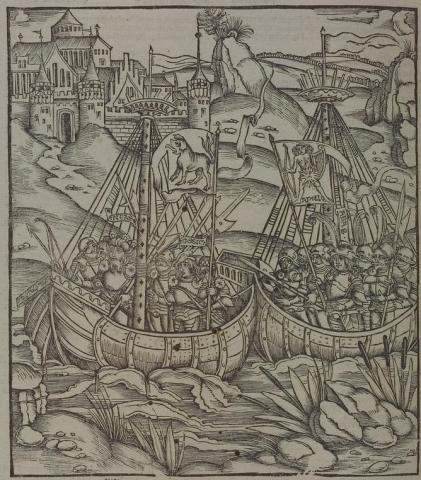


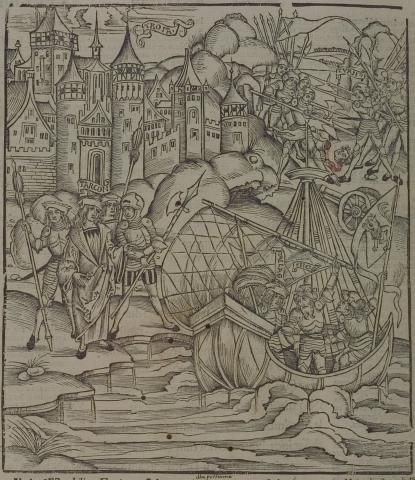
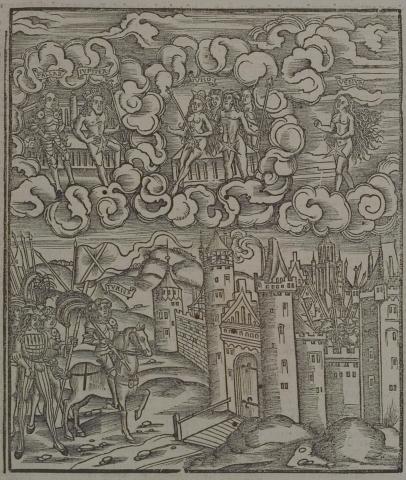
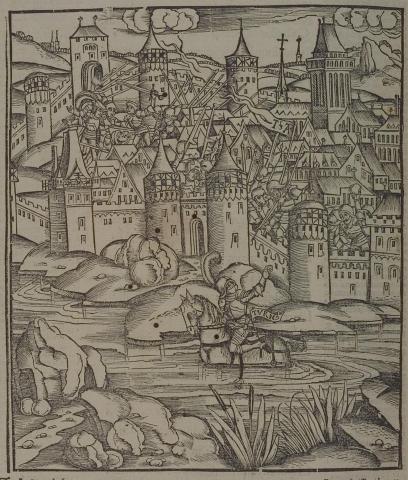
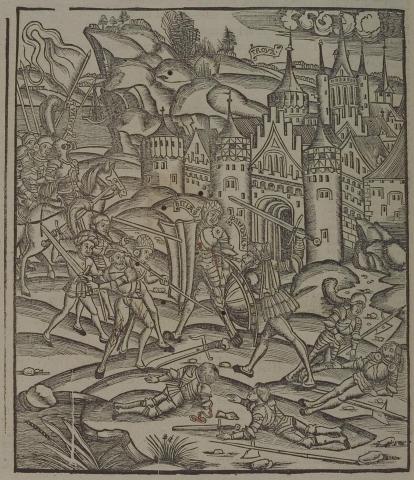
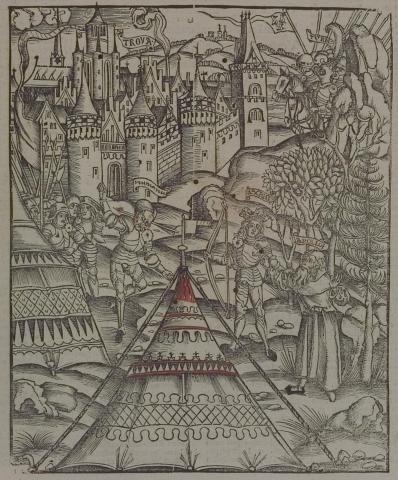
Sebastian Brant (1458-1521) was a humanist scholar of many competencies. Trained in classics and law at the University of Basel, Brant later lectured in jurisprudence there and practiced law in his native city of Strasbourg. While his satirical poem Das Narrenschiff won him considerable standing as a writer, his role in the transmission of Virgil to the Renaissance was at least as important. In 1502 he and Strasbourg printer Johannes Grüninger produced a major edition of Virgil’s works, along with Donatus’ Life and the commentaries of Servius, Landino, and Calderini, with more than two hundred woodcut illustrations. (Annabel Patterson)